#there's extremely light hints at content beyond the anime and even manga but i tried to be careful
Text
one thing i really like about the apothecary diaries is how fluidly maomao moves between high- and low-class society, between the rear palace and the pleasure district, allowing us to see the parallels in the power dynamics. in both settings, we see women trying to make the most of their relative stations with whatever tools available to them, which are often shared. much of the politics of the series centers women and the ways they try to navigate the world through seduction, marriage, beauty, fashion, manipulation, etc, because these are the things they're valued for. their appearance, their social graces, their "purity", their marriageability, their ability to bear children, and beyond - these all lend political, economic, and social leverage to themselves and their families regardless of class.
the mystery angle in particular enables the story to closely examine what tools and motives are available to women in the apothecary diaries in a way that's contextualized and humanized. it's also how the series highlights said women operating with a keen awareness of society's expectations and systems. whether that's applying deathly white powder to maintain impractical beauty standards, faking illnesses to deter certain visitors, using parlor tricks to subtly punish callous men, or wearing ostentatious outfits to hide a certain truth, each mystery we encounter reveals more about what it means to navigate the world of the apothecary diaries as a woman in addition to revealing their cleverness (or lack thereof) in doing so.
maomao is no exception to the rule, often weighing similar questions of propriety and power before she acts - although she does engage from a unique position. she's a literate woman from the lower class with special circumstances surrounding her birth, versed as an apothecary, and favored by highly ranked members of the court. this, plus her marked lack of ambition beyond medicine, gives her a lot of mobility between and (relatively) unbiased insight into both the high- and low-ranked parts of society. in turn, we readers are given a fantastic protagonist to explore what i consider a core draw of the series: seeing how maomao chooses to move through the world, highly conscious of her own social positioning as well as that of all the other women around her
#the apothecary diaries#kusuriya no hitorigoto#maomao#my jessays#anime analysis#there's extremely light hints at content beyond the anime and even manga but i tried to be careful#kusuriya analysis#idr how to tag this for myself lmao i think tad stinks as an acronym frankly#anyway i love how much women are centered in the apothecary diaries it's truly delightful and i love seeing maomao connect with other women
1K notes
·
View notes
Note
(1/2) I think that Root A was, ironically, a victim of the series success. If you think about it as Ishida and Morita thinking the series would never get more than 24 episodes and they wanted to tell a story that would be complementary to the manga and even put some ideas Ishida might've had for :RE there thinking it wouldn't be animated (Aogiri invading Cochlea and chapter 68 are too similar not to notice) it makes a lot of sense. But then season 1 came out and it exploded beyond expectations.
(2/2) And so, based on how I interpreted the info we have (reddit AMA, interviews), I can only imagine the amount of last minute rewriting so they could make animating :RE possible while still trying to have original content. The more I dig into it, the fact that it managed to still have a lot of good despite all the production issues it seems to have had on many levels is actually something that I’m still impressed by. I really wish we could’ve seen them go fully original, honestly.
Yes, the original director for both Season 1 and Root A was definitely a person with vision even working with extremely limited scope.
There are actually some scenes tat I feel like are done a bit better in Root A. For example, the Hide and Kaneki talk at the end is phenomenal, as well as the first scene in the final episode which sows Kaneki remembering Anteiku even as his current aged self.
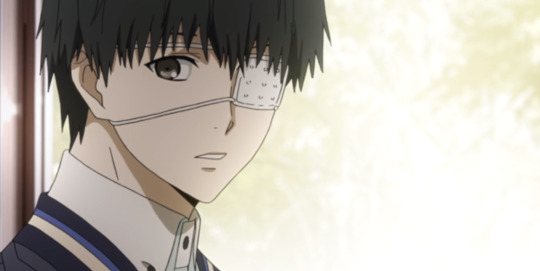
The contrast in watching it fade away.

Then the disappearance of all of Anteiku and the contrast that is shown now that it has been mostly abandoned by everyone who was once there.
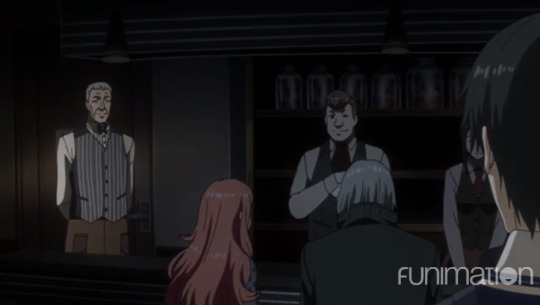
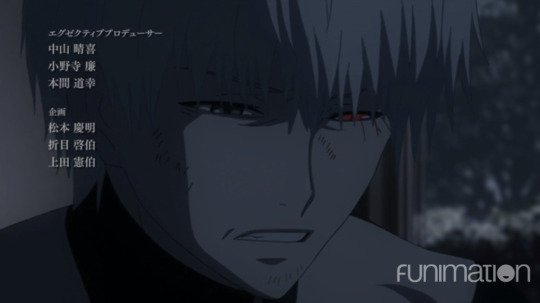
All of this told with imagery rather than with words.
As I said also, Hide and Kankei’s talk at the last episode of Root A is phenomenal and does a lot to save the season thematically. One we have the callbacks to the original manga that are used for a benefit rather than simply copy pasting the scene because it happened in the manga. Hide referencing that it’s had to make coffee, as a metaphor for how Yoshimura used it, that it’s difficult for certain individuals to grow depending on their circumstances, and in contrast to ow Kaneki is standing right in front of him as Shironeki, a much changed version of is original friend.

“It’s hard to make coffee” is just a metaphor for, “It’s hard to grow and change as a person” and Hide says this while Kaneki is confronted and reunited with at the same time his childhood friend who he is explicitly trying to hide his changes from.

Kaneki trying to hide his ghoul side from Hide, even when it’s completely obvious is shown to us and not told, and Hide’s response with an exapserated sigh actually tells a lot.

I’ve also always read this as a basically the only fleshed out version of the sewer scene we’re ever going to get. First is the confrontation that Hide knew all along.

Second the fact that Hide and Kaneki don’t actually just automatically go back to talking to each other like old buddies in this scene. Hide even remarks that he can’t get through to Kaneki just by talking to him like he always has after so much has changed.
Acceptance of showing his ghoul side in front of Hide comes, when Hide explains the good things that Kaneki has done in front of him as a ghoul. Once again shown to us the audience.

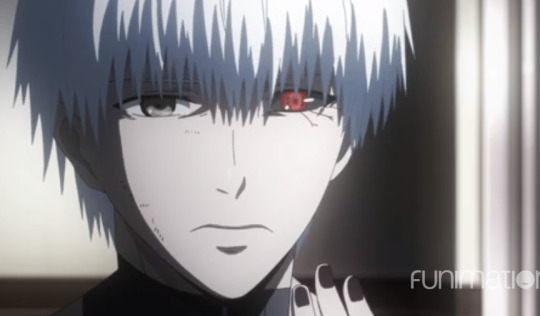
Not only that, but Hide also finally admits to his own feelings of loneliness and his own misgivings about the relationship. Something that only ever gets hinted about in the manga and never really elaborated on.






Not only does Hide have a motivation of his own but it also reflects Kaneki’s. Hide says that he felt left behind when Kaneki found a new place to belong and started to hide things from him, so all on his own he tried to do whatever he could in order to still be useful to Kaneki. At the end though he realized it was too little too late to accomplish anything entirely on his own. Notice how Hide’s reflection is being shown in the scene as well. Reflections are a motife used since the original anime opening of season one to both hide and reveal the hidden sides of characters.

Hide confronts Kaneki with his flaw, but he also suffers from the same flaw showing where the conflict came for the both of them. Kaneki went off on his own, Hide tried to help him on his own, but at no point did they ever work together.
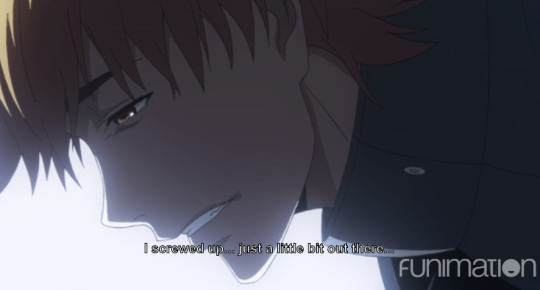
However, as the light finally coms on between them not only does it reveal their true intentions finally but it also reveals the tragic fact that it is too late.
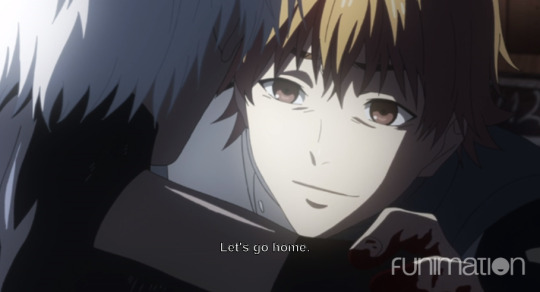
They both wanted the same thing in the end, but went in the opposite direction to reach it. It’s because of that the light drains out in the scene.

Then immediately afterwards, snow starts to fall in the background. All visual storytelling, all conveying the mood of the scene to the audience. A brief dazzling light of inspiration is immediately met with an even darker fall into shadow. The falling snow is met with a few moments later the burning ruins of Anteiku. The moment Hide dies, the scene itself cuts immediately afterwards to Arima looking ahead, a sign of Kaneki’s eventual fate which was sealed the moment he lost Hide. All in all it’s an excellent scene even in the middle of a good not great season.
87 notes
·
View notes